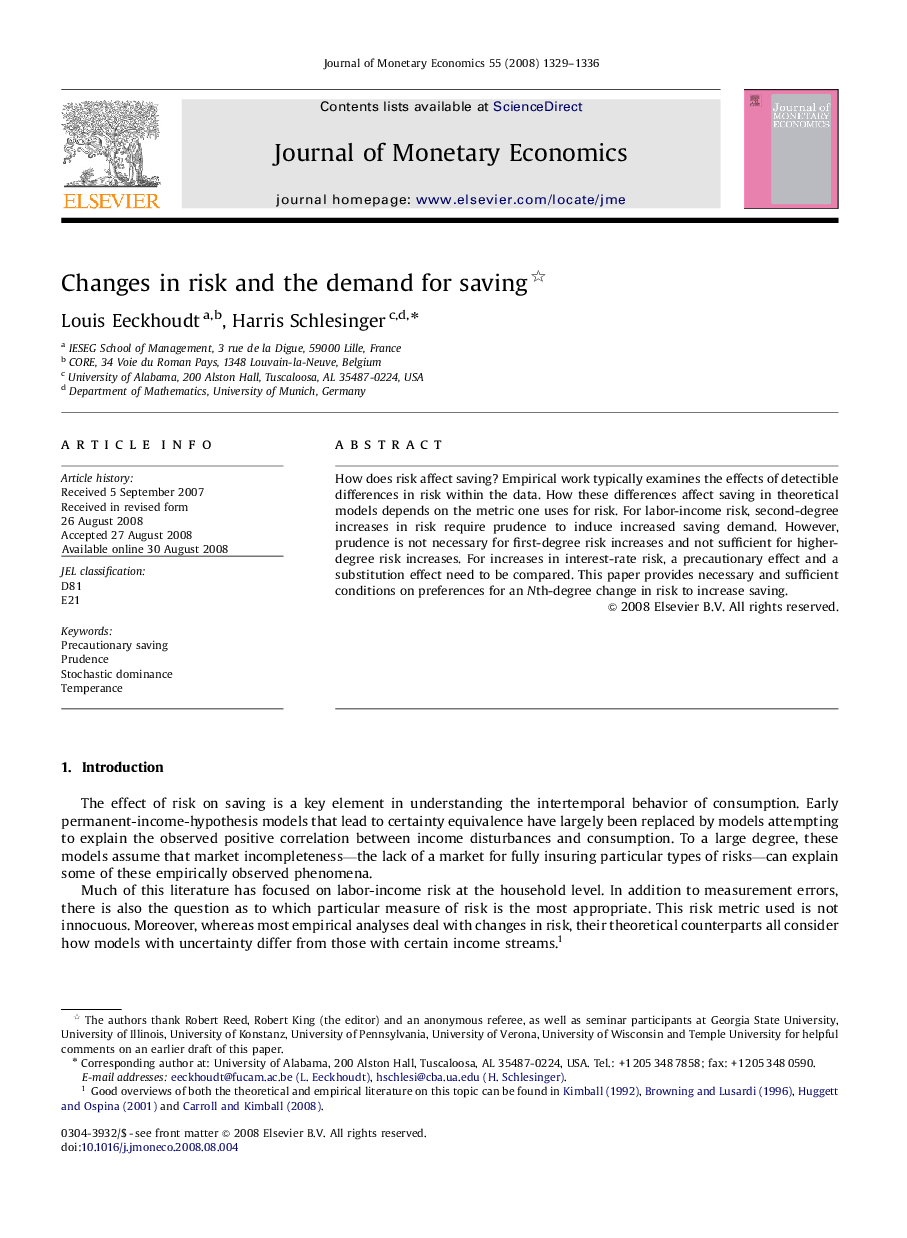| Article ID | Journal | Published Year | Pages | File Type |
|---|---|---|---|---|
| 966685 | Journal of Monetary Economics | 2008 | 8 Pages |
Abstract
How does risk affect saving? Empirical work typically examines the effects of detectible differences in risk within the data. How these differences affect saving in theoretical models depends on the metric one uses for risk. For labor-income risk, second-degree increases in risk require prudence to induce increased saving demand. However, prudence is not necessary for first-degree risk increases and not sufficient for higher-degree risk increases. For increases in interest-rate risk, a precautionary effect and a substitution effect need to be compared. This paper provides necessary and sufficient conditions on preferences for an Nth-degree change in risk to increase saving.
Related Topics
Social Sciences and Humanities
Economics, Econometrics and Finance
Economics and Econometrics
Authors
Louis Eeckhoudt, Harris Schlesinger,
